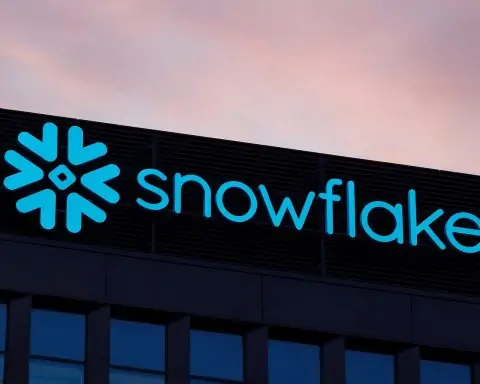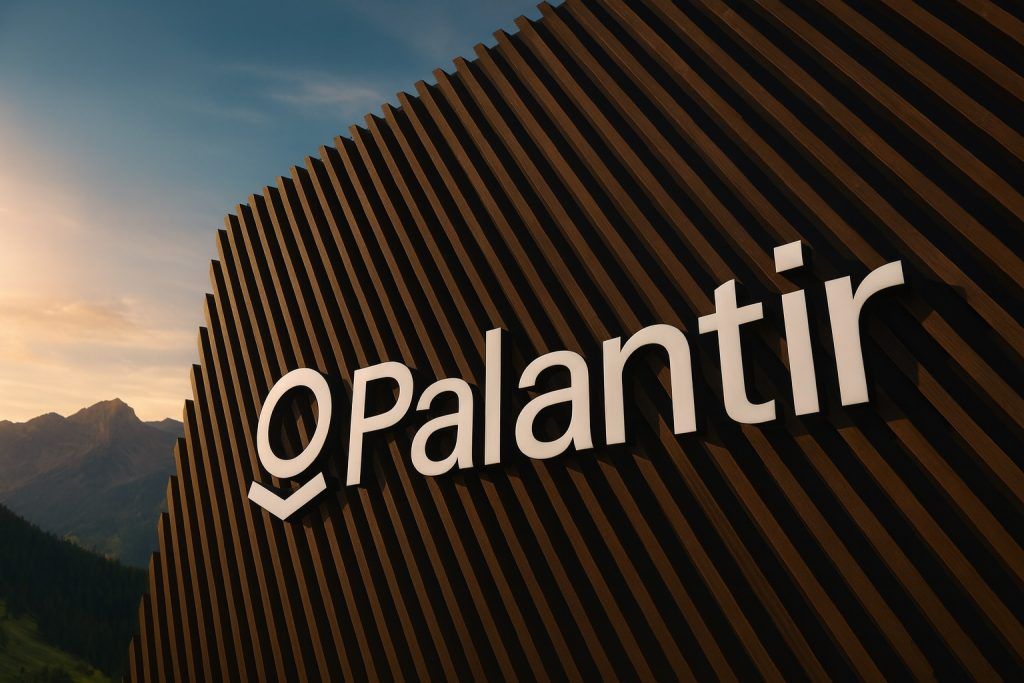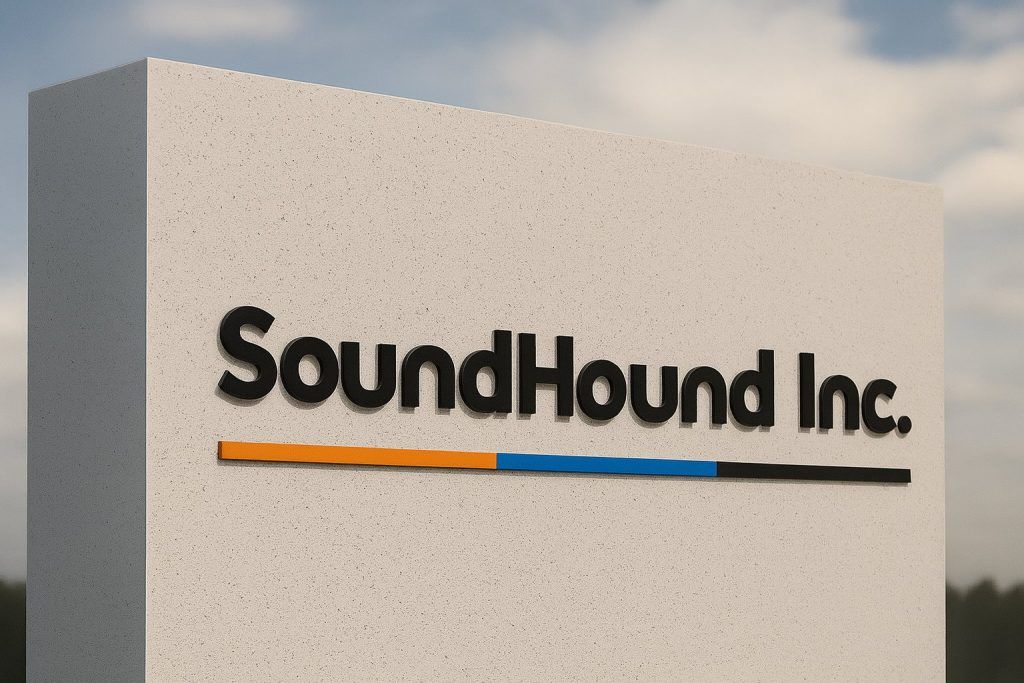- Stock Price & Recent Performance: Pfizer (NYSE: PFE) traded around $24.6 per share on November 4, 2025 [1]. The stock is down about 8–9% year-to-date 2025 and has tumbled over 60% from its late-2021 peak [2], underperforming the broader market (the S&P 500 is up roughly 12% YTD) [3]. Shares rallied in early October on news of a government drug-cost deal, then pulled back by early November, essentially flat over the past two months [4] [5]. Pfizer’s market capitalization stands near $140 billion, and at ~$24.5 the stock offers a hefty ~7% dividend yield [6] [7], reflecting investor caution.
- Q3 2025 Earnings Beat: Pfizer reported third-quarter 2025 adjusted earnings of $0.87 per share, beating consensus estimates (~$0.79) [8], though revenue of $16.65 billion came in slightly below expectations of $16.94B [9]. Sales fell ~6% year-on-year due to a sharp decline in COVID-19 product revenue [10]. Despite the drop, Pfizer raised its full-year 2025 profit guidance for the second quarter in a row – now projecting $3.00–$3.15 EPS (up from $2.90–$3.10) [11] – citing solid execution and aggressive cost cuts. The company reaffirmed its $61–$64B revenue outlook for 2025 [12] and says it’s on track to realize ~$7.2B in cost savings by 2027 [13].
- Obesity Drug Bidding War: A high-stakes takeover battle is underway in the booming obesity drug arena. Pfizer had a deal to acquire Metsera – a developer of next-generation weight-loss therapies – for about $7.3 billion, but rival Novo Nordisk launched a surprise higher bid [14] [15]. Pfizer raised its offer to $8.1B, yet Metsera’s board deemed Novo’s latest $10B bid superior [16] [17]. Pfizer responded with two lawsuits against Novo Nordisk and Metsera, alleging breach of contract and “anticompetitive” conduct [18] [19]. A Delaware judge declined to block the bidding, signaling the auction should play out to maximize value for Metsera’s shareholders [20]. The saga highlights Pfizer’s determination to break into the obesity treatment market – forecasted at $150 billion annually by early next decade [21] – where Novo and Eli Lilly dominate with blockbuster GLP-1 drugs.
- Government Price Agreement: In late September, Pfizer became the first big pharma company to sign onto the U.S. government’s new “TrumpRx” program to lower drug costs [22]. The landmark agreement involves Pfizer providing significant Medicaid drug discounts to reduce out-of-pocket costs for American patients, in exchange for relief from certain tariffs over the next three years [23]. CEO Dr. Albert Bourla said he was “proud of Pfizer’s leadership as the first in our industry” to reach such an agreement, which offers “greater clarity for our business” going forward [24]. News of this deal in late September boosted investor sentiment – PFE stock jumped nearly 14% in the weeks after the announcement [25] – but analysts cautioned about potential margin impacts from the pricing concessions [26]. Notably, Pfizer’s close ties with the current administration (President Trump) could prove advantageous; analysts speculated this relationship might help Pfizer politically “thwart” Novo’s bid for Metsera or yield other strategic benefits [27].
- COVID-19 Demand Declines: As expected, Pfizer’s COVID-19 product sales have plummeted in 2025 with the pandemic’s retreat. In Q3, Paxlovid antiviral revenue fell 55% year-over-year, and Comirnaty vaccine sales dropped 20% [28]. U.S. health authorities now recommend booster shots only for seniors (65+) and high-risk individuals, sharply shrinking the eligible market [29]. This has been a major headwind: Pfizer’s combined COVID vaccine and antiviral revenue was $11.1B in 2024 [30], but is trending far lower in 2025. To adapt, Pfizer has cut costs (including a recently announced workforce reduction) and shifted focus to its non-COVID portfolio, which actually grew 4% operationally last quarter as new products like migraine pill Nurtec and blood thinner Eliquis saw strong demand [31]. In August, the FDA approved Pfizer/BioNTech’s updated 2025–26 COVID vaccine (targeting a newer Omicron subvariant) for older adults and at-risk groups [32]. Pfizer began shipping this new booster for the fall season [33] [34], but overall COVID vaccine uptake remains lower than in prior years due to waning public demand.
- Pipeline & Drug Development News: Outside of COVID, Pfizer’s R&D pipeline is in the spotlight with over 100 programs in development [35]. The company highlighted several positive trial results in October 2025:
- Oncology: An independent study showed Xtandi® (enzalutamide) plus leuprolide cut the risk of death by 40% versus standard therapy in a certain advanced prostate cancer setting [36]. In lung cancer, Pfizer reported that a combination of Braftovi® + Mektovi® demonstrated sustained long-term survival benefits in patients with BRAF-mutant tumors [37]. And in bladder cancer, the immunotherapy combo Padcev® + Keytruda® (pre- and post-surgery) reduced recurrence or progression risk by 60% in a clinical trial [38]. These results, many from Pfizer’s newly acquired Seagen cancer portfolio, bolster the company’s post-2025 outlook as it prepares for patent expirations on older drugs.
- Vaccines & Others: Pfizer’s maternal RSV vaccine (Abrysvo) and pneumococcal vaccine franchise (Prevnar) are contributing new revenue streams in 2025. The company is also developing next-generation mRNA vaccines and oral antivirals. In obesity, Pfizer is trialing an oral GLP-1 drug (danuglipron) as a daily pill for weight loss [39] – a different approach from injectables like Novo’s Ozempic. Management has emphasized obesity and oncology as key growth areas, given industry projections of 20%+ annual growth in obesity therapies in coming years [40].
- Dividends and Financials: Pfizer continues to reward shareholders with a robust dividend. It recently declared a $0.43 quarterly dividend (payable Dec 1, 2025), maintaining its payout even as earnings dipped [41] [42]. At the current share price, this equates to a $1.72 annual dividend (~7.0% yield) [43] [44] – among the highest yields in Big Pharma. However, the payout ratio has surged above 90% of 2025 earnings [45], which some analysts note leaves little margin if revenues falter. Pfizer has paused share buybacks (with $3.3B still authorized) and is focusing on debt reduction in the wake of recent acquisitions [46]. The balance sheet remains solid: Pfizer’s debt-to-equity is about 0.65 and it retains an investment-grade credit rating [47]. Liquidity is adequate (current ratio ~1.16) [48], and the company is “de-levering” post-M&A to preserve flexibility for future deals [49]. Overall, Pfizer’s valuation multiples are low – its forward price-to-earnings (P/E) ratio is roughly 8 based on the new guidance, well below the market average, reflecting both earnings uncertainty and investor skepticism about the post-COVID growth trajectory.
- Analyst Sentiment & Forecasts: Wall Street’s outlook on Pfizer is cautious but not bearish. Consensus rating: “Hold.” Among 17 analysts, only 4 currently rate PFE a Buy (1 a Strong Buy) versus 12 Holds and 1 Sell [50]. The average 12-month price target is about $28 per share [51], ~15% above current levels. For instance, Bank of America recently reiterated a neutral view with a $30 target [52], and Morgan Stanley trimmed its target to $32 (Equal-weight) amid near-term headwinds [53]. The cautious stance stems from uncertainty around Pfizer’s earnings recovery in 2025–26 as COVID sales wane and major drugs approach patent cliffs. That said, analysts do see value: Pfizer’s pipeline progress and cost cuts could drive a rebound. 24/7 Wall St. projects PFE could reach $33.60 by end of 2025 (a ~36% upside) assuming it earns ~$2.80 EPS and a modest 7.5x forward P/E [54]. Longer-term forecasts are subdued – for example, one analysis estimates ~$34 stock price by 2030, only slightly higher than today [55]. This implies expectations of low single-digit growth, but also suggests current pessimism may be overdone. Notably, Pfizer’s dividend yield and defensive business make it a potential “value” play if earnings stabilize. “Our revenue volatility is largely in the past as COVID-related uncertainties have diminished,” CFO Dave Denton stated earlier, expressing confidence that refocusing on Pfizer’s core portfolio will “set the stage for ongoing margin expansion.” [56] Many analysts are waiting to see evidence of that turnaround before turning decisively bullish.
- Peer Comparison: Pfizer’s stock slump is not unique among COVID-era vaccine makers, but some peers have fared better in 2025:
- Moderna (MRNA): Pfizer’s mRNA vaccine partner-turned-competitor has seen its stock slide even more sharply. Moderna shares are down over 35% in 2025 (one of the S&P 500’s worst showings) [57], as its COVID vaccine sales collapsed and the company posted a $3.6B net loss for 2024 [58]. Moderna is cutting costs and pivoting to pipeline projects (like an RSV vaccine and personalized cancer vaccines), but like Pfizer, it’s navigating a post-pandemic reset. Analysts also rate MRNA a Hold on average, though its price targets imply a potential recovery ahead [59]. Both Pfizer and Moderna are essentially victims of their own 2021 success – their stocks soared on vaccine euphoria and have since come back to earth as demand normalized.
- Johnson & Johnson (JNJ): In contrast, diversified pharma giant J&J has delivered a “standout performance in 2025, outperforming both the broader market and the healthcare sector” [60]. J&J’s stock hit an all-time high of ~$194 in October 2025 [61] after the company posted steady growth (Q3 sales +6.8% YoY) [62] and raised its guidance. Free from COVID dependence and buoyed by its MedTech and consumer health divisions, J&J is up roughly 15–20% this year, a mirror image of Pfizer’s decline. Analysts give J&J a Moderate Buy rating, citing its stability and pipeline (e.g. oncology, immunology) as strengths. J&J’s success underscores how Pfizer’s recent struggles are company-specific (tied to the COVID boom-and-bust and patent cycle) rather than an industry-wide issue – many big pharma names (Merck, Eli Lilly, Novo Nordisk, etc.) are trading near highs thanks to breakthrough products in oncology and obesity.
- Others: Pfizer’s performance also trails that of AbbVie, which despite Humira’s patent loss has new immunology drugs driving growth (AbbVie stock is roughly flat to modestly up in 2025, with a ~4% dividend). Meanwhile, Eli Lilly and Novo Nordisk have been stock market darlings thanks to their wildly successful GLP-1 weight-loss drugs. Lilly is up dramatically over the past two years (a >50% gain in 2023 and continuing strength in 2025), and Novo’s market cap briefly eclipsed $400B this year on surging demand for Wegovy/Ozempic. Pfizer hopes a foothold in the obesity market (via Metsera or its oral candidate) can revive its fortunes and close the gap with these peers.
Detailed Analysis and Outlook
Stock Price Trends and Technical Analysis
Pfizer’s share price has been trading near multi-year lows, reflecting both recent challenges and cautious investor sentiment. As of Nov 4, 2025, PFE sits around $24.5, roughly the midpoint of its 52-week range ($20.92 – $28.00) [63]. The stock hit a 12-month low just above $20 in early 2025 amid concern over falling COVID revenues, then rebounded. In late September and early October, Pfizer climbed back to the upper $20s (a ~10% jump) following its government pricing deal announcement [64], temporarily trading above its 50-day and 200-day moving averages. However, disappointing industry news (e.g. weaker COVID booster uptake) and the uncertainty of the Metsera takeover battle led to profit-taking. By early November, Pfizer’s 50-day average ($24.76) converged with its 200-day average ($24.31) [65], indicating a lack of a strong trend. This technical “flatline” suggests the stock is searching for direction, consolidating after its volatile swings.
From a chart perspective, Pfizer has clear support around the low-$20s – investors stepped in at ~$21 during 2025’s sell-offs, likely viewing the dividend yield as too attractive at those levels. On the upside, $28–$30 is a resistance zone, as rallies in 2024 and 2025 fizzled out there amid broader market weakness and company-specific news. A decisive break above $28 could signal a bullish trend change, but that may require tangible positive catalysts (e.g. a win in the obesity drug race or stronger-than-expected earnings guidance for 2026). Conversely, if earnings or pipeline setbacks emerge, a dip back toward $20 is possible, though Pfizer’s low beta (≈0.55) [66] and defensive profile tend to limit extreme volatility. The stock’s beta of 0.55 means it moves roughly half as much as the overall market, befitting a large pharmaceutical firm with stable drug revenues. This lower volatility, combined with the high dividend, has made Pfizer popular among income-focused investors – but it also means breakneck growth is not anticipated.
In summary, Pfizer’s stock appears to be basing at current levels. The relative stability since the summer suggests that much of the bad news (COVID declines, pipeline concerns) may be priced in. Any positive surprises – such as accelerating sales of new drugs, resolution of the Metsera situation in Pfizer’s favor, or macro relief (e.g. easing tariffs or healthcare policy clarity) – could spark a relief rally. On the other hand, investors will be watching upcoming earnings (Q4 and 2026 guidance) closely. Given the technical indicators, patience may be required: Pfizer might trade in a range in the near term, until a clear narrative (turnaround or further decline) emerges.
Q3 2025 Earnings Breakdown
Pfizer’s third-quarter 2025 results, released on Nov 4, provide a detailed snapshot of the company’s transition period. Total revenue was $16.7 billion, down 6% from $17.7B a year prior [67]. This decline was entirely due to the anticipated drop in COVID-related sales. Notably, non-COVID product revenue actually rose ~4% operationally in Q3 [68], a positive sign that the “base” business is growing again once the COVID distortion is removed. Key contributors included Eliquis (the stroke-prevention drug co-marketed with Bristol Myers Squibb) – which saw 22% global growth aided by an expansion of Medicare coverage in the U.S. – and Vyndaqel/Vyndamax (for a form of heart disease), up 7% on increased diagnoses. Nurtec ODT (a migraine therapy from Pfizer’s 2022 Biohaven acquisition) also jumped 22% year-on-year with strong U.S. demand. These gains helped offset declines in the legacy portfolio.
On the COVID front, Paxlovid antiviral sales plunged 55% vs. Q3 2024 [69] as infections and government orders waned. Comirnaty vaccine revenue fell 20% [70] on lower utilization – indeed, the FDA’s updated guidance limiting boosters to high-risk groups has drastically shrunk the addressable market [71]. Pfizer noted that in the post-pandemic environment, COVID vaccines are shifting to a commercial (private market) model, which could eventually stabilize prices but at lower volumes. For 2025, Pfizer still expects steep COVID revenue declines, but believes the “COVID cliff” bottomed out this year. In fact, CFO David Denton commented that COVID-related volatility is largely behind Pfizer now, allowing the company to refocus on core growth drivers [72].
Despite lower revenue, Pfizer managed to beat earnings expectations thanks to cost controls and mix. Adjusted diluted EPS was $0.87, down from $1.06 a year ago but comfortably above analyst forecasts (by $0.08 per share) [73]. Pfizer’s net profit margin for the quarter was ~17% [74], and adjusted operating income fell 18% YoY – a smaller drop than the revenue decline, indicating some cushioning from cost cuts. The company has been aggressively trimming expenses: R&D and SG&A budgets are being optimized, with Pfizer targeting $7+ billion in annual cost savings by 2027 (via a program of efficiency improvements and workforce reductions) [75]. These efforts led Pfizer to raise and tighten its 2025 EPS guidance to a range of $3.00–$3.15 [76], up a dime from prior guidance and implying a strong Q4. It’s worth noting this is the second consecutive quarter Pfizer has nudged up its profit forecast [77], signaling management’s confidence that they can hit their targets despite revenue headwinds.
One-off items also affected the quarter: Pfizer took a $1.35B charge for in-process R&D related to an in-licensing deal (with 3SBio in China) [78]. This hit was excluded from adjusted earnings. Such charges, along with hefty acquisition costs (e.g. the $43B Seagen deal closed in early 2024), are why Pfizer actually reported a GAAP net loss in 2024. But on an adjusted basis, the company remains solidly profitable. For the first nine months of 2025, adjusted EPS was $2.56, on track to reach that $3+ full-year goal [79].
Importantly, Pfizer’s cash flow and capital allocation remain shareholder-friendly. Through Q3, Pfizer paid $7.3B in dividends (making good on its commitment to maintain the $0.41–0.43 quarterly dividend) [80]. No share repurchases have been done in 2025 [81], but Pfizer hinted it may resume buybacks once its debt leverage comes down from recent M&A. The company ended the quarter with no changes to its revenue outlook – still expecting $61–$64B in 2025 sales [82], which implies a big Q4 jump driven by the newly launched COVID booster and typical year-end pharma sales momentum. If there’s a risk, it’s that Pfizer might be relying on a strong flu/COVID season or a surge in Paxlovid orders that may not fully materialize. Investors will be watching the next earnings closely to see if Pfizer can deliver that late-year revenue bump or if guidance gets adjusted.
Pfizer’s Pivot Beyond the Pandemic
With COVID products fading, Pfizer is pivoting decisively to new growth drivers. The company has undergone a transformation – using its windfall from the vaccine/antiviral to acquire promising assets and beef up its pipeline. Now it faces a “prove it” period to show those investments will pay off. Here are the key elements of Pfizer’s strategy going forward:
- Therapeutic Focus Areas: Pfizer has identified five priority areas: vaccines, oncology, inflammation/immunology, rare diseases, and metabolic health (including obesity and diabetes). These are markets where Pfizer sees high unmet need and the potential for innovative therapies – and notably, they are less likely to face immediate generic competition. For example, in oncology Pfizer’s purchase of Seagen (completed in early 2024) gave it a portfolio of cutting-edge antibody-drug conjugates (like Padcev and Tivdak) and bolstered its cancer pipeline. The strong trial results for Padcev + Keytruda in bladder cancer [83] and Tukysa in breast cancer (HER2+) [84] this fall show the wisdom of that acquisition, positioning Pfizer in growing cancer niches. In vaccines, Pfizer launched Abrysvo (RSV vaccine for infants and older adults) in late 2023, which is expected to be a multi-billion-dollar product in a few years. The company is also pioneering a combined COVID/flu mRNA shot in trials, hoping to leverage its mRNA expertise from Comirnaty. In immunology, Pfizer will soon face the patent expiration of Xeljanz (2025) and later the huge Eliquis (2028, co-owned with BMS). To fill that gap, it’s developing new inflammation drugs (it acquired Arena Pharmaceuticals in 2022 for an S1P modulator, etrasimod) and betting on prevnar-20 expansions in pneumococcal disease.
- Obesity and Metabolic Medicine: Perhaps the most high-profile pivot is Pfizer’s push into the obesity drug boom. Rival Novo Nordisk’s Ozempic and Wegovy, and Eli Lilly’s Mounjaro (tirzepatide, now branded Zepbound for weight loss), have demonstrated unprecedented weight-loss efficacy and opened up a massive market of millions of patients. Pfizer initially had an injectable GLP-1 candidate that it discontinued (a stumble it’s trying to overcome) [85]. Now, Pfizer’s strategy is twofold: develop an oral obesity drug (danuglipron showed promise in Phase 2, with moderate weight loss; an improved version lotiglipron was in trials but paused for safety review) and acquire external innovation – hence the bid for Metsera. Metsera is a startup developing combination therapies (GLP-1 + amylin analogues) that could rival Lilly’s and Novo’s next-gen offerings [86]. Pfizer’s initial $7.3B merger deal for Metsera in September underscored how crucial this is for them [87]. Novo Nordisk’s aggressive counterbid implies they see Metsera as a threat or a prize worth having, possibly to maintain their dominance. The outcome of this bidding war will be significant for Pfizer: winning Metsera would instantly make it a serious contender in obesity, while losing it to Novo would mean Pfizer must rely on its internal R&D or other deals to catch up. Either way, obesity treatments are expected to grow at 22%+ CAGR through 2030 [88], so Pfizer understandably views this as a must-win arena for future growth. CEO Albert Bourla’s comment that Novo’s bid is “the epitome of antitrust conflict” [89] shows how high the stakes are – Pfizer is essentially accusing Novo of trying to lock up the market and prevent new competition.
- Regulatory & Policy Environment: Pfizer’s voluntary agreement with the U.S. government on drug pricing is a double-edged sword. On one hand, it cements a cooperative stance with regulators and could shield Pfizer from harsher measures (like broader Medicare price negotiations under the Inflation Reduction Act). It also gave Pfizer a near-term boost (tariff relief from China, Canada, Mexico, which will save costs) [90] [91]. On the other hand, Pfizer will be providing steep discounts in the Medicaid channel, which could squeeze U.S. margins on some drugs. The “TrumpRx” initiative – as the media has dubbed it – was embraced by Pfizer early, and other pharma companies (like Lilly and Novo) are reportedly nearing similar deals to ensure their drugs gain favorable access in Medicare/Medicaid [92]. Pfizer’s leadership here might earn goodwill in Washington. Bourla’s rapport with President Trump is well-known [93], and Pfizer leveraged that to shape policy (for instance, avoiding inclusion of certain drugs in price controls in exchange for tariffs being dropped). Going forward, investors will watch how this policy trade-off impacts Pfizer’s bottom line: will volume increases (more patients can afford drugs) compensate for lower prices? Pfizer has indicated it will exclude some premium, high-margin drugs from the program [94] [95] to protect profitability, focusing the discounts on older products. Overall, while this deal introduces some margin pressure, it also reduces uncertainty by heading off potential bigger reforms. Clarity on drug pricing is valuable for long-term planning – as Bourla noted, it “provides greater clarity for our business” [96] – and investors generally favor certainty.
- M&A and Partnerships: Besides Metsera, Pfizer could pursue additional bolt-on acquisitions to boost its pipeline. Having digested Seagen (for oncology) and other deals (Biohaven, Arena, ReViral) recently, Pfizer signaled it’s open to “business development” but will be prudent given its debt load [97]. It has ~$3.3B of share buyback authorization left [98], but current guidance assumes no repurchases in 2025 as cash is prioritized for debt paydown. By 2026–27, if earnings rebound, Pfizer may resume buybacks or dividends increases. We might also see more partnerships like the existing ones – e.g., Pfizer co-markets Eliquis with BMS (a highly successful partnership; Eliquis sales were ~$10B in 2022 split between the two companies). Pfizer and BioNTech remain partners for mRNA vaccines, and that relationship could extend beyond COVID to other infectious diseases or even cancer vaccines. In sum, Pfizer’s strategy is a mix of internal R&D, strategic acquisitions, and alliances to ensure it has a stake in the most lucrative pharma segments of the late 2020s.
Risks and Challenges
While Pfizer’s outlook is improving, several risks merit mention:
- Patent Expirations (“Cliff”): Later this decade, Pfizer faces patent cliffs for some blockbuster drugs – notably Eliquis (blood thinner) in 2028 (U.S.) and Ibrance (breast cancer) around 2027. These could erode billions in revenue if generic competition enters. Pfizer is lobbying for measures like patent thickets or reformulation to extend exclusivity, but the loss is likely inevitable. The company is banking on new launches (like its next-gen pneumococcal vaccine Prevnar-20, RSV vaccine, migraine drugs, oncology drugs) and pipeline successes to fill the gap. It has projected that the combined impact of patent expirations from 2025-2030 is about $17 billion in annual revenue – and aims to replace that through new products contributing $25B+ by 2030 (a goal management set out in 2021). Achieving this is crucial; any shortfall could keep pressure on the stock.
- Integration and Execution: Pfizer has made big acquisitions (totaling over $70B between Seagen, Arena, Biohaven, etc.). Integrating these companies, realizing synergies, and successfully commercializing their products is a challenge. There’s also execution risk in launching new vaccines like Abrysvo (will uptake meet expectations?) and scaling up manufacturing for new therapies. The recent cost-cutting drive, while necessary, could risk disrupting operations or morale if not managed well.
- Clinical & Regulatory Hurdles: As with any pharma, not all pipeline candidates will succeed. Pfizer did face a setback with the safety hold on its oral GLP-1 (lotiglipron) in 2023 – though danuglipron continues. Regulatory approvals for novel drugs can be unpredictable (for instance, Pfizer’s hemophilia gene therapy and an ulcerative colitis drug are in late-stage testing – their outcomes are not guaranteed). The FDA’s stance could also be influenced by political pressures, especially on drug safety and pricing.
- Market Competition: Pfizer operates in highly competitive markets. In COVID vaccines, Moderna and Novavax are competitors (Moderna’s booster is a key rival each fall). In oncology, Merck, BMS, Roche and others vie for the same patient populations. Pfizer’s new products will need to fight for market share, which could mean higher marketing spend or price competition. The obesity area is particularly competitive – even if Pfizer wins Metsera, Eli Lilly’s new dual/triple agonist drugs (like tirzepatide and retatrutide) are ahead in development and could dominate. Pfizer will be playing catch-up.
- Macroeconomic and Currency Factors: Pfizer, like other multinationals, is exposed to foreign exchange fluctuations (a stronger dollar can reduce overseas revenue – though in Q3 forex actually provided a slight boost [99]). Global economic conditions can affect drug sales (e.g., slower growth in emerging markets or changes in government healthcare budgets). Also, as an exporter, Pfizer benefited from the recent tariff relief agreement – if trade tensions re-escalate or if the tariff deal falls apart under a future administration, that could create new costs.
Despite these challenges, Pfizer’s management expresses confidence that 2025 will mark the turning point: the trough for COVID sales and the beginning of a new growth cycle driven by its recent investments. Investors are essentially in “wait and see” mode – hence the stock’s depressed valuation. If Pfizer can deliver on earnings in the next couple of quarters and show tangible progress (e.g. successful new drug launches, a resolution in the obesity drug contest, steady non-COVID growth), sentiment could quickly improve.
Conclusion: Is Pfizer Stock a Buy, Hold, or Sell?
For the average investor, Pfizer presents a classic risk-reward dilemma at this juncture. On one hand, the stock’s decline has left it with a low valuation, a dividend yield near 7%, and multiple shots on goal in lucrative markets (oncology, obesity, vaccines). The company’s Q3 results and guidance raise show that it is managing the COVID comedown better than some feared, and cost-cutting is preserving profitability [100] [101]. Pfizer’s sheer scale, product diversity, and cash generation ability cannot be dismissed – even after the 2021–2022 boom-bust, it will still generate over $60B in sales this year [102], putting it among the world’s top pharma firms.
On the other hand, Pfizer must prove that it can ignite growth without the COVID crutch. The next year or two are about execution: launching new vaccines, winning FDA approvals for pipeline drugs, integrating acquisitions, and defending market share as competition heats up. There is also the question of whether Pfizer’s management, led by Dr. Albert Bourla, can pull off a smooth transition – investors have been somewhat skeptical, hence the lukewarm stock performance even as some peers thrive. The analyst consensus of “Hold” reflects that wait-and-see attitude [103].
For income-oriented investors, Pfizer’s reliable dividend is a strong attraction – few companies offer 7% yields with Pfizer’s level of earnings coverage and blue-chip status. That dividend has been held intact through the pandemic and post-pandemic volatility, a sign of confidence from the board. Barring a severe downturn, Pfizer seems committed to maintaining it (even if that means a high payout ratio in the short term) [104].
In the short term, Pfizer’s stock may remain range-bound until a clear catalyst emerges. The upcoming resolution of the Metsera takeover could be one such catalyst: if Pfizer prevails without overpaying, it may be cheered as a smart strategic win (giving Pfizer a potential future blockbuster and signaling it can compete with Novo) – but if Pfizer loses out, some may question its competitiveness in a key area. Additionally, Q4 results and 2026 guidance (likely coming in January 2026) will be critical. Strong guidance could validate that 2025 was the trough and brighter days are ahead, potentially re-rating the stock higher. Conversely, if guidance disappoints or needs to account for further COVID-related write-downs, the stock could languish longer.
Looking long term (3-5 years), Pfizer’s prospects hinge on delivering its next wave of products. If even a few of its big pipeline bets succeed – say, a successful obesity pill, a first-in-class cancer therapy, and steady growth from vaccines – Pfizer’s earnings could climb and the market might reward it with a higher multiple. In that optimistic scenario, total returns (stock appreciation plus ~7% yield) could be quite attractive from today’s base. However, if the pipeline underwhelms and Pfizer faces a gap from patent expiries, the stock might stay stuck in the mid-$20s, with the dividend being the main source of return.
In summary, Pfizer Inc. in November 2025 is a company in transition, balancing near-term headwinds with long-term opportunities. The stock offers value and income, but also requires patience. For now, many experts are advising a hold: let the upcoming news play out and watch for clear signs of a turnaround. As MarketBeat’s analysts noted, Pfizer wasn’t on the list of top buys for the fall [105] – other pharma names currently have more momentum. Yet, Pfizer’s narrative could evolve quickly. With a rich pipeline and bold moves (like the government pact and obesity push), Pfizer is laying groundwork for a comeback. Investors should keep a close eye on upcoming milestones – an earnings beat here, a drug approval there, or a clever acquisition – that could signal Pfizer is regaining its stride. Until then, the stock remains a battleground between value seekers and skeptics, making Pfizer an intriguing story stock as we head into 2026.
Sources: Recent Pfizer press releases and earnings reports [106] [107], Reuters and MarketWatch news on Nov 4, 2025 [108] [109], MarketBeat and 24/7 Wall St. analyst data [110] [111], and industry commentary on peer performance [112] [113].
References
1. www.marketbeat.com, 2. www.morningstar.com, 3. www.forbes.com, 4. www.marketbeat.com, 5. 247wallst.com, 6. www.marketbeat.com, 7. www.marketbeat.com, 8. www.marketbeat.com, 9. www.marketbeat.com, 10. www.reuters.com, 11. www.reuters.com, 12. www.businesswire.com, 13. www.businesswire.com, 14. www.reuters.com, 15. www.reuters.com, 16. www.reuters.com, 17. www.reuters.com, 18. www.reuters.com, 19. www.reuters.com, 20. www.reuters.com, 21. www.reuters.com, 22. www.reuters.com, 23. www.reuters.com, 24. www.businesswire.com, 25. www.marketbeat.com, 26. www.marketbeat.com, 27. www.reuters.com, 28. www.reuters.com, 29. 247wallst.com, 30. 247wallst.com, 31. www.businesswire.com, 32. www.pfizer.com, 33. www.pfizer.com, 34. www.pfizer.com, 35. www.marketbeat.com, 36. www.pfizer.com, 37. www.pfizer.com, 38. www.pfizer.com, 39. 247wallst.com, 40. 247wallst.com, 41. www.marketbeat.com, 42. www.marketbeat.com, 43. www.marketbeat.com, 44. www.marketbeat.com, 45. www.marketbeat.com, 46. www.businesswire.com, 47. www.marketbeat.com, 48. www.marketbeat.com, 49. www.businesswire.com, 50. www.marketbeat.com, 51. www.marketbeat.com, 52. www.marketbeat.com, 53. www.marketbeat.com, 54. 247wallst.com, 55. 247wallst.com, 56. 247wallst.com, 57. www.insidermonkey.com, 58. www.insidermonkey.com, 59. www.insidermonkey.com, 60. finance.yahoo.com, 61. www.tradingview.com, 62. www.investor.jnj.com, 63. www.marketbeat.com, 64. www.marketbeat.com, 65. www.marketbeat.com, 66. www.marketbeat.com, 67. www.businesswire.com, 68. www.businesswire.com, 69. www.reuters.com, 70. www.reuters.com, 71. 247wallst.com, 72. 247wallst.com, 73. www.marketbeat.com, 74. www.marketbeat.com, 75. www.businesswire.com, 76. www.businesswire.com, 77. www.reuters.com, 78. www.businesswire.com, 79. www.businesswire.com, 80. www.businesswire.com, 81. www.businesswire.com, 82. www.businesswire.com, 83. www.pfizer.com, 84. www.pfizer.com, 85. www.reuters.com, 86. www.businesswire.com, 87. www.reuters.com, 88. 247wallst.com, 89. www.reuters.com, 90. www.businesswire.com, 91. www.reuters.com, 92. www.reuters.com, 93. www.reuters.com, 94. www.marketbeat.com, 95. www.marketbeat.com, 96. www.businesswire.com, 97. www.businesswire.com, 98. www.businesswire.com, 99. www.reuters.com, 100. www.marketbeat.com, 101. www.businesswire.com, 102. www.businesswire.com, 103. www.marketbeat.com, 104. www.marketbeat.com, 105. www.marketbeat.com, 106. www.businesswire.com, 107. www.businesswire.com, 108. www.reuters.com, 109. www.morningstar.com, 110. www.marketbeat.com, 111. 247wallst.com, 112. www.insidermonkey.com, 113. www.tradingview.com







